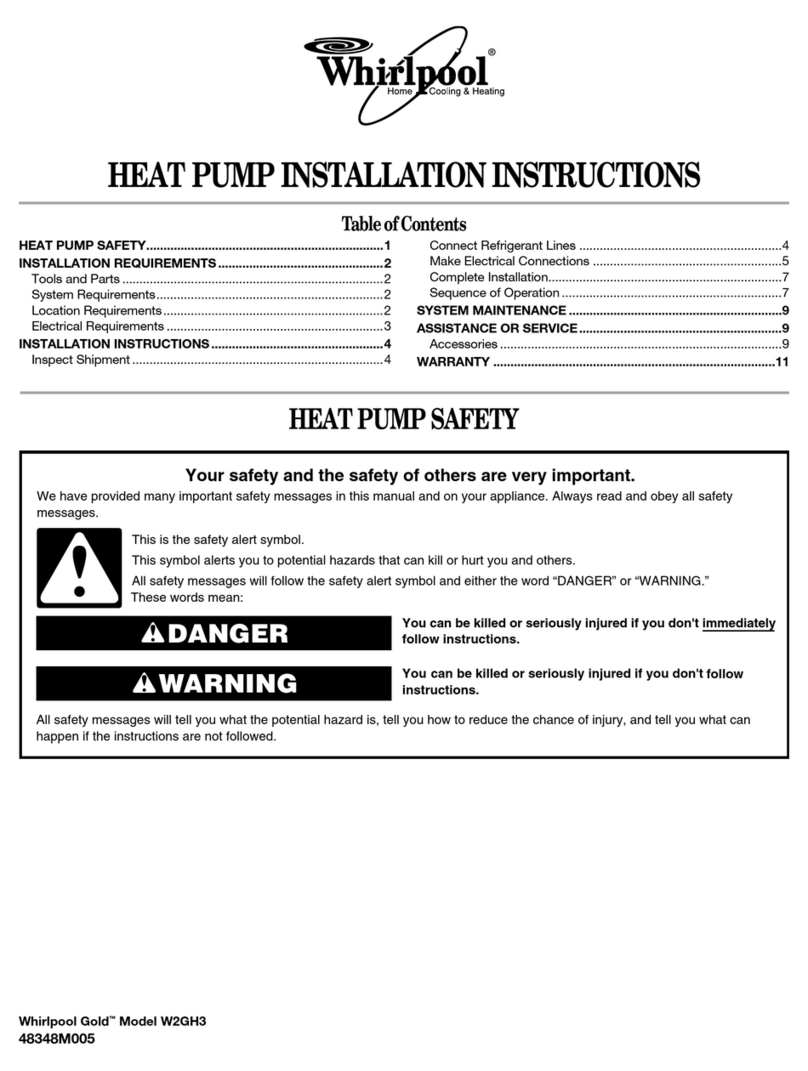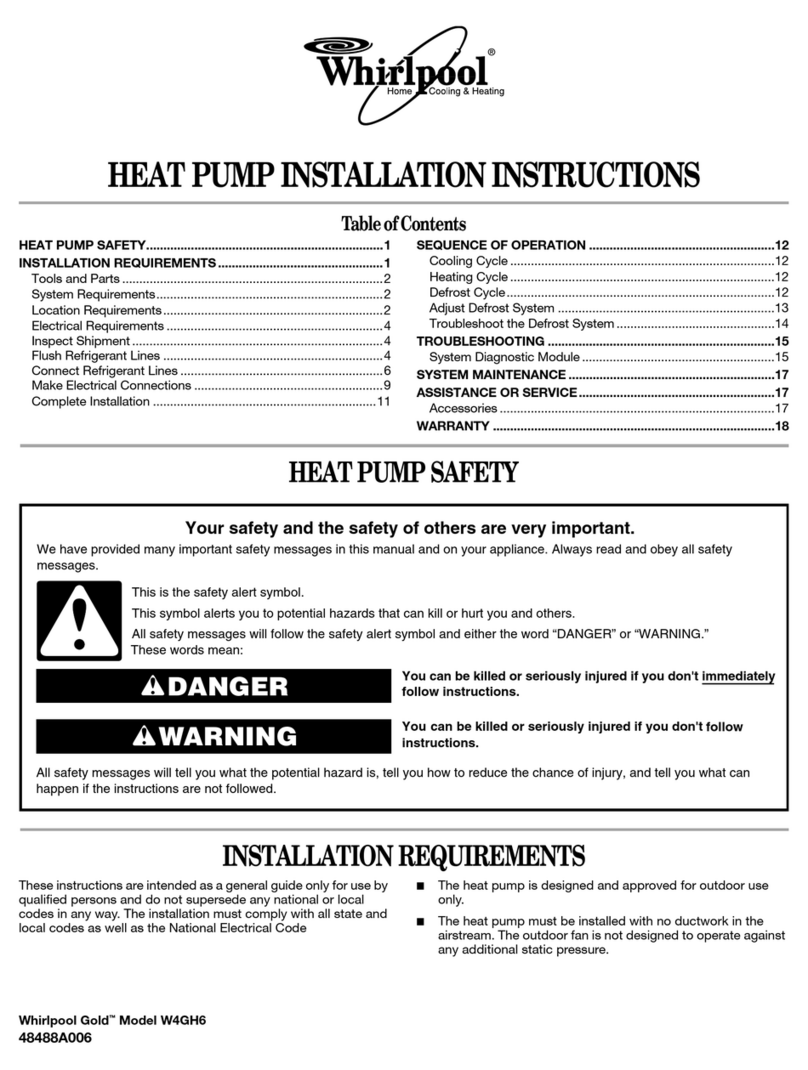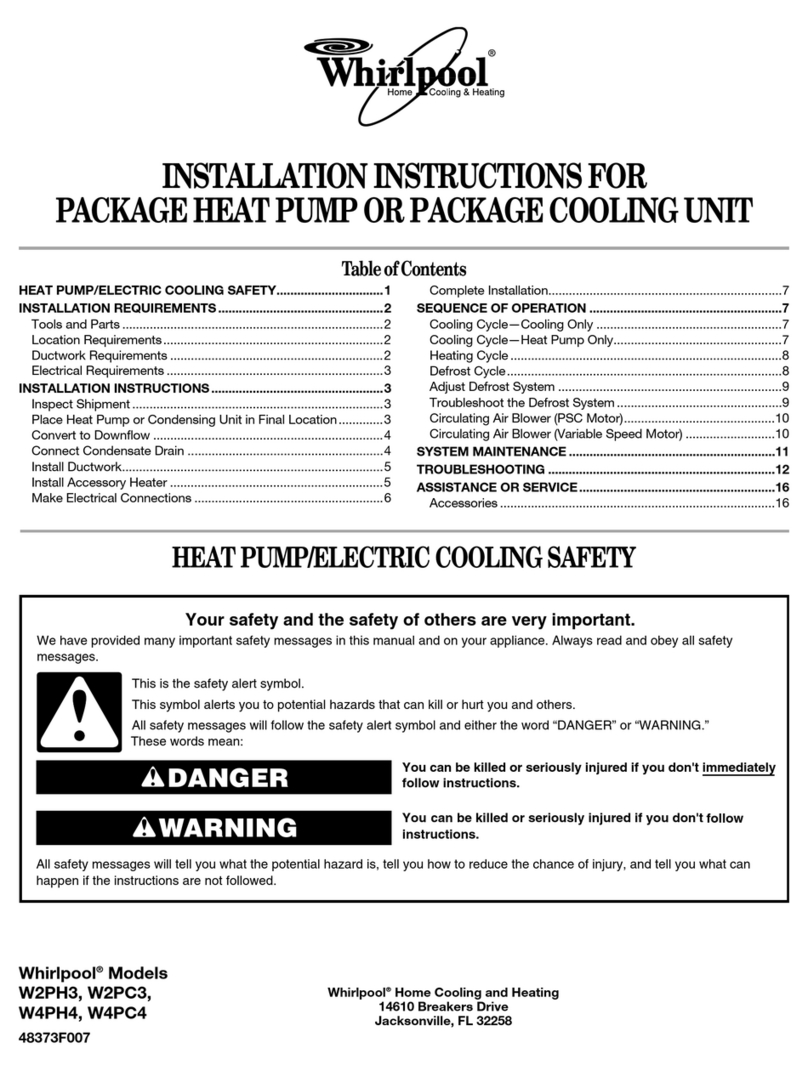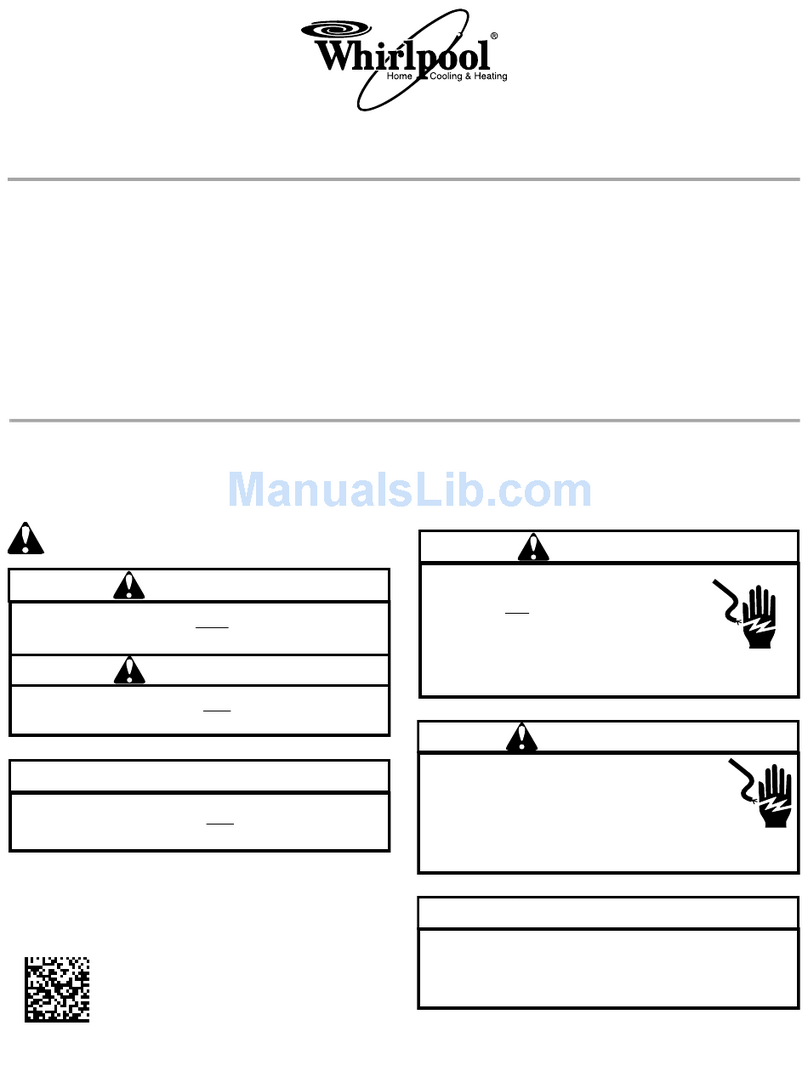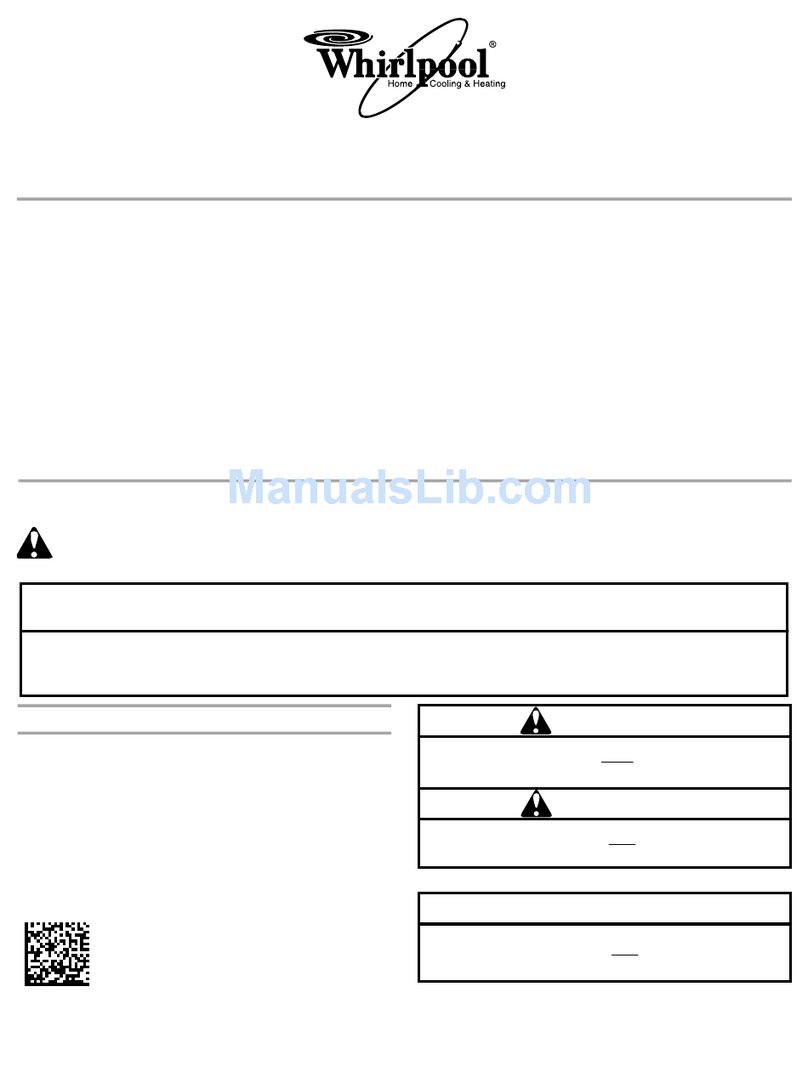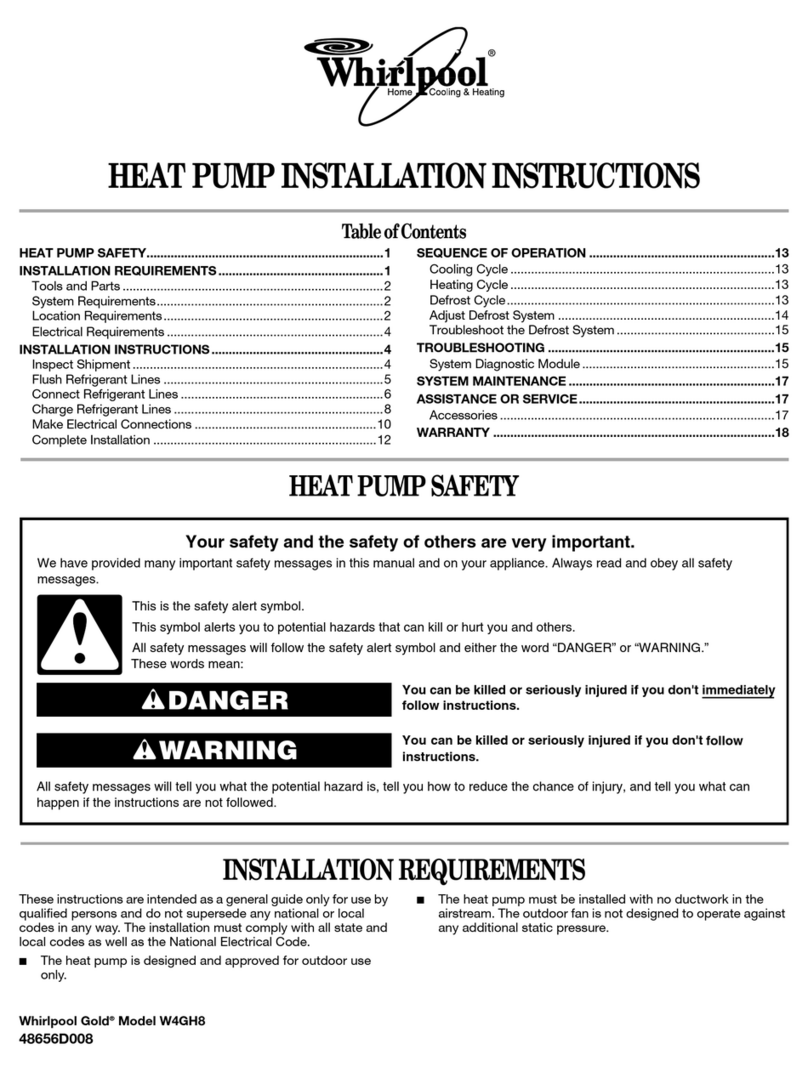
2
IMPORTANT: The United States Environmental Protection
Agency (EPA) has issued various regulations regarding the
introduction and disposal of refrigerants in this unit. Failure to
follow these regulations may harm the environment and can lead
to the imposition of substantial fines. These regulations may vary
by jurisdiction. A certified technician must perform the installation
and service of this product. Should questions arise, contact your
local EPA office.
This product is designed and manufactured to permit installation
in accordance with national codes. It is the installer’s
responsibility to install this unit in accordance with national codes
and/or prevailing local codes and regulations.
INSTALLATION REQUIREMENTS
These instructions are intended as a general guide only for use by
qualified persons and do not supersede any national or local
codes in any way. The installation must comply with all state and
local codes as well as the National Electrical Code.
■The heat pump is designed and approved for outdoor use
only.
■The heat pump must be installed with no ductwork in the
airstream. The outdoor fan is not designed to operate against
any additional static pressure.
Tools and Parts
Gather the required tools and parts before starting installation.
Read and follow the instructions provided with any tools listed
here.
Tools Needed
Parts Needed
Check local codes and HVAC supplier. Check existing electrical
supply, and read “Electrical Requirements,” “Location
Requirements,” “System Requirements” and “Connect
Refrigerant Lines.”
NOTE: Some condensing units do not contain a factory-installed
filter dryer. With those units, a properly sized filter dryer must be
field installed in the liquid (high pressure) line set between the
outdoor condensing unit and indoor evaporator unit.
System Requirements
Heat pump system matches are derived from actual laboratory
testing of matched systems. It is recommended that only
matching equipment be used to ensure proper operation and
efficient performance.
■The designed system matches are listed in the heat pump
specification sheets and on the heat pump refrigerant
charging instructions located on the back of the service
access panel.
■Refrigerant charging instructions include a list of matching
indoor equipment with the proper thermal expansion device
size and amount of refrigerant charge required.
■This heat pump has been factory charged with a quantity of
refrigerant (R-410A) sufficient for a matched indoor coil and a
maximum 15 ft (4.6 m) of refrigerant line.
Goodman 12
WARNING
To avoid possible injury, explosion or death, practice safe
handling of refrigerants.
Goodman 13
WARNING
Refrigerants are heavier than air. They can "push out"
the oxygen in your lungs or in any enclosed space. To
avoid possible difficulty in breathing or death:
• Never purge refrigerant into an enclosed room or
space. By law, all refrigerants must be reclaimed.
• If an indoor leak is suspected, throughly ventilate the
area before beginning work.
• Liquid refrigerant can be very cold. To avoid possible
frostbite or blindness, avoid contact and wear gloves
and goggles. If liquid refrigerant does contact your
skin or eyes, seek medical help immediately.
• Always follow EPA regulations. Never burn refrigerant,
as poisonous gas will be produced.
Goodman 14
WARNING
To avoid possible explosion:
• Never apply flame or steam to a refrigerant cylinder. If
you must heat a cylinder for faster charging, partially
immerse it in warm water.
• Never fill a cylinder more than 80% full of liquid
refrigerant.
• Never add anything other than R-22 to an R-22 cylinder
or R-410A to an R-410A cylinder. The service
equipment used must be listed or certified for the type
of refrigerant used.
• Store cylinders in a cool, dry place. Never use a cylinder
as a platform or a roller.
■Torch
■¹⁄₄" (6.4 mm) nut driver
■Vacuum pump
■Micron gauge
■⁵⁄₁₆" (7.6 mm) nut driver
■Gauge set for R-410A
refrigerant
■Nitrogen system
Goodman 15
WARNING
To avoid possible explosion, use only returnable (not
disposable) service cylinders when removing refrigerant
from a system.
• Ensure the cylinder is free of damage which could lead
to a leak or explosion.
• Ensure the hydrostatic test date does not exceed 5 years.
• Ensure the pressure rating meets or exceeds 400 lbs.
When in doubt, do not use cylinder.


















